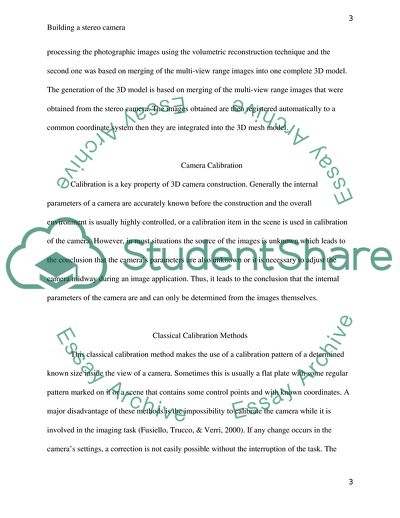Cite this document
(Building a Stereo Camera. Scientific and Technical Aspects Literature review Example | Topics and Well Written Essays - 1500 words, n.d.)
Building a Stereo Camera. Scientific and Technical Aspects Literature review Example | Topics and Well Written Essays - 1500 words. https://studentshare.org/technology/1846071-literature-review
Building a Stereo Camera. Scientific and Technical Aspects Literature review Example | Topics and Well Written Essays - 1500 words. https://studentshare.org/technology/1846071-literature-review
(Building a Stereo Camera. Scientific and Technical Aspects Literature Review Example | Topics and Well Written Essays - 1500 Words)
Building a Stereo Camera. Scientific and Technical Aspects Literature Review Example | Topics and Well Written Essays - 1500 Words. https://studentshare.org/technology/1846071-literature-review.
Building a Stereo Camera. Scientific and Technical Aspects Literature Review Example | Topics and Well Written Essays - 1500 Words. https://studentshare.org/technology/1846071-literature-review.
“Building a Stereo Camera. Scientific and Technical Aspects Literature Review Example | Topics and Well Written Essays - 1500 Words”. https://studentshare.org/technology/1846071-literature-review.


